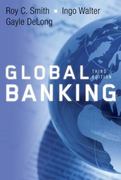Answered step by step
Verified Expert Solution
Question
1 Approved Answer
We are currently at the end of year t . You performed a thorough financial analysis of XYZ and forecast the following Free
We are currently at the end of year t You performed a thorough financial analysis of XYZ and forecast the following Free Cash Flows FCF:Year t: million USDYear t: million USDYear t: million USDFrom year t onward, you expect the FCFs to grow at a constant yearly rate of Through your analysis, you also determined that the appropriate Weighted Average Cost of Capital WACC for XYZ was Finally, you know that XYZ has million USD in debt and million shares outstanding. What is the terminal value in Year t Suppose the correct Terminal Value is million USD ie discard your answer to the previous question what is the price of share of XYZ using the Discounted Cash Flow DCF valuation method? Suppose you observe that a share of XYZ is traded at a price of USD on an exchange. Based on your own estimate of the price of a share of XYZ would you say that the company is overvalued or undervalued by the market use the price for one share that you found in the previous question to answer this question You are now contemplating the following project: buying share of XYZ today at USD on the exchange.What is the Net Present Value NPV of this project? Of course, you also know about the multiplesbased valuation method. You would like to use this method to verify if your conclusion regarding the overvaluation or undervaluation of XYZ is correct.On the stock exchange, companies that are comparable to XYZ including in terms of financing structure ie relative debt level currently have a PriceEarnings ratio of XYZs current earnings are million USD and it still has million shares outstanding.Based only on the information provided in this question, what is your estimate of the price of a share of XYZ in USD? Suppose you have found a lower value for the price of a share of XYZ using the multiplesbased method than the DCF method. Given this discrepancy, you are looking for errors you could have made in your forecasts using the DCF method.Which of the following possible estimation errors could explain the discrepancy between the share prices you found using the DCF and multiplesbased valuation methods?When evaluating each of the following statements, assume all other variables are held constant.aYou underestimated the Free Cash Flow FCF in Year tbYou underestimated the Weighted Average Cost of Capital WACCcYou overestimated the constant yearly growth rate of Free Cash Flows FCFs from Year t onward.dYou overestimated the Weighted Average Cost of Capital WACCeYou underestimated the constant yearly growth rate of Free Cash Flows FCFs from Year t onward.
Step by Step Solution
There are 3 Steps involved in it
Step: 1

Get Instant Access to Expert-Tailored Solutions
See step-by-step solutions with expert insights and AI powered tools for academic success
Step: 2

Step: 3

Ace Your Homework with AI
Get the answers you need in no time with our AI-driven, step-by-step assistance
Get Started


